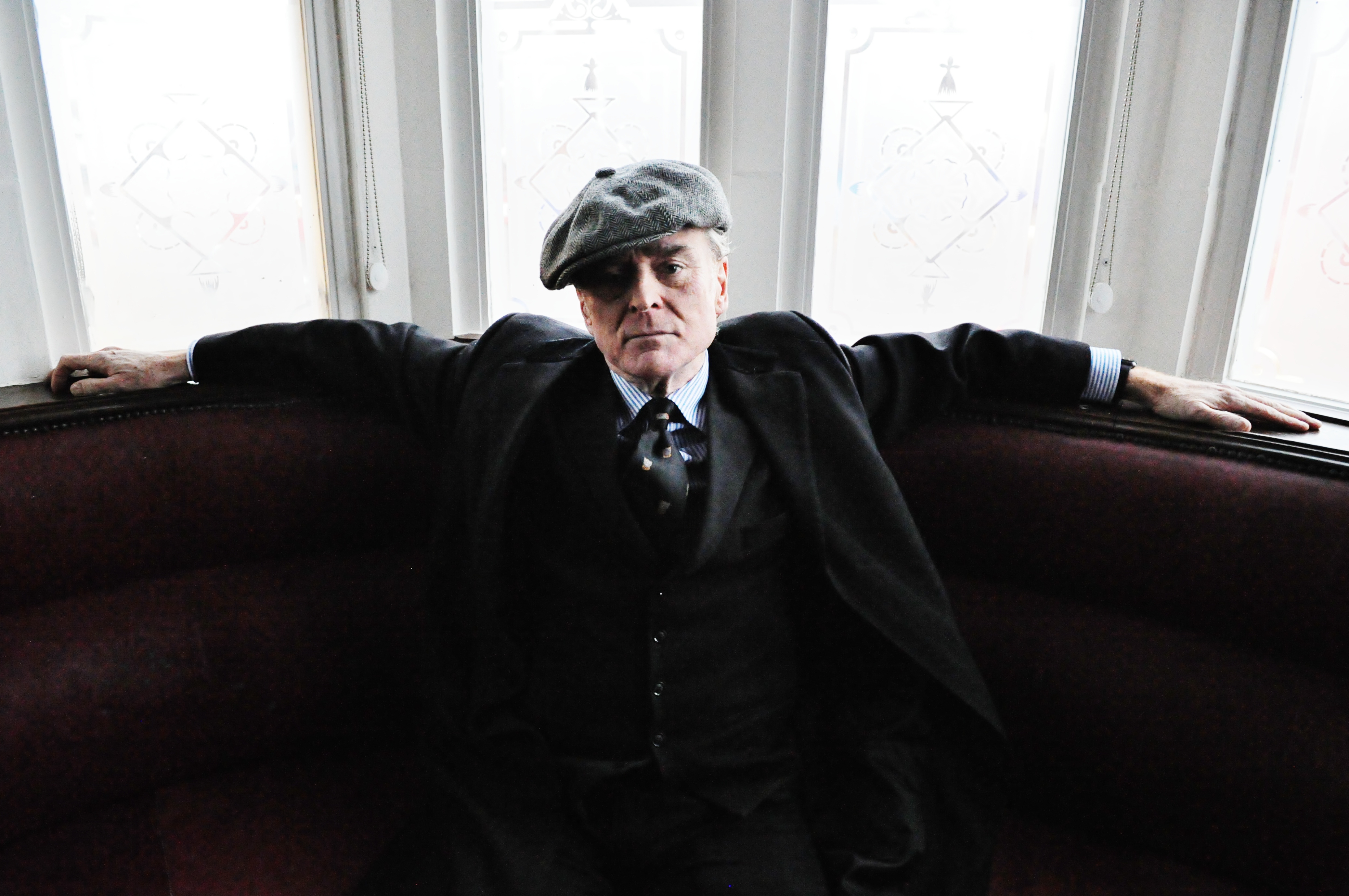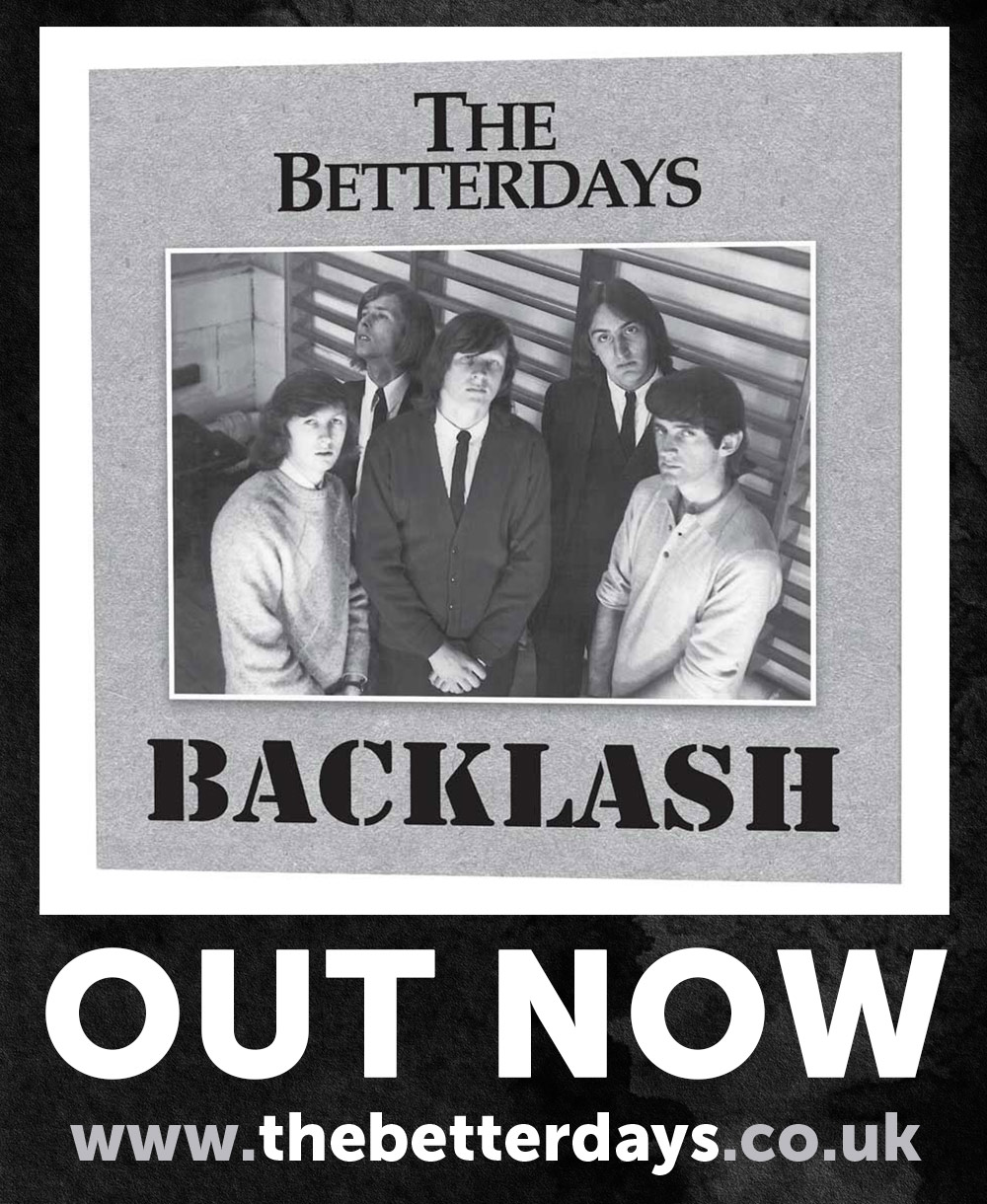I just read a quote from a US musician and it rang bells. I thought; I am sure someone actually said this to me in recent months. This was the quote: “I wanted to spend less time figuring out HOW we were gonna do something and just actually do it.”
I wracked my brain as to who it might have been. Then I remembered. Not exactly the same, but it was another musician, but this time; in the context of this guy’s other love; painting. His art. In answer to my question of how one should start to make art if the urge were there?
He replied without hesitation: “Just do it. Make marks. Make something. Paint on your hand if you do not have a paint brush. Rub it onto a piece of cardboard; push it on and see what it comes out like.
“See if there’s any emotion. If you are happy with it, let people see it. It’s within us all. We’ve all got a great novel in us. We have all got a symphony, a great movie, a great painting in us.
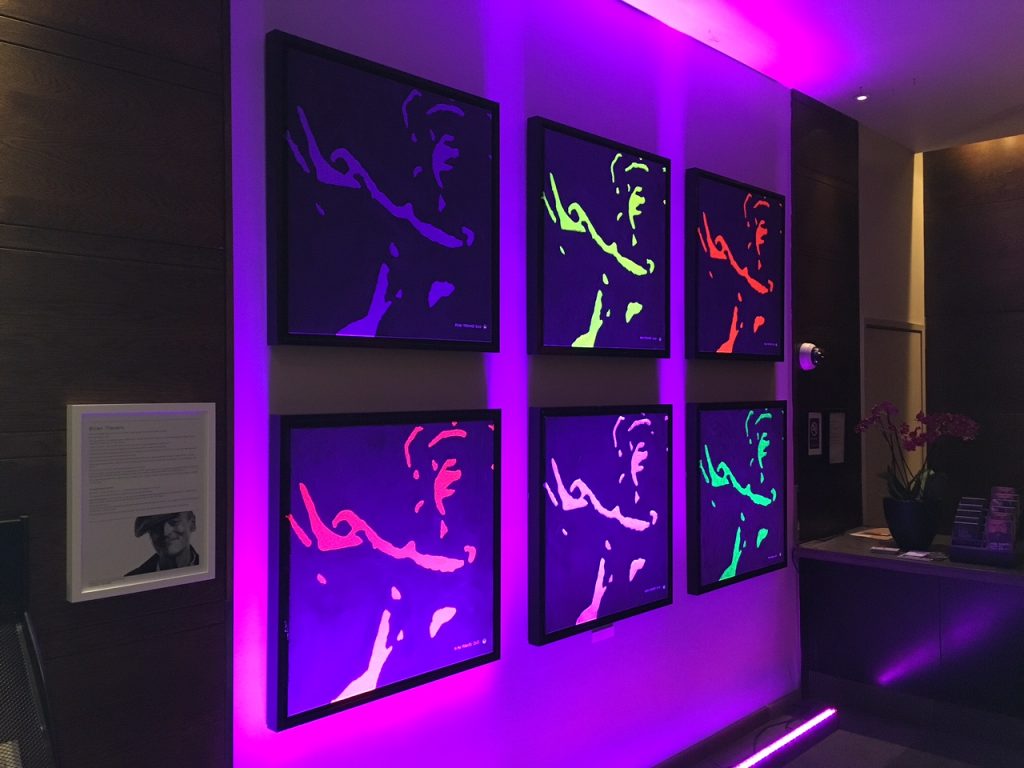
“We all have a song, a great piece of poetry…. but it doesn’t just jump out. How long does it take to become an overnight success? 15 years! You have to start digging in deep. The deeper you dig, the less you know.”
So said a man who is probably better known to most as a founder member of British reggae superstars UB40. A band who has sold maybe 120 million records, had number ones in the USA, here and all over the world. Who still sell out tours globally almost 40 years after they formed in Birmingham as young lads.
Brian Travers, sax man, songwriter and one of the focal points on stage with his mates Robin Campbell, Duncan Campbell, Jimmy Brown, Earl Falconer, Norman Hassan, Martin Meredith, Tony Mullings and Laurence Parry.
Andy Warhol agreed with Brian. He said: “Don’t think about art. Don’t think about making art. Just get it done.”
“Now I’m looking inside, looking inside me. Music is a team sport. Art is just you and the idea.”
I’ve had many conversations with Brian about his band – Britain’s most successful reggae band and second only to Bob Marley and the Wailers for global success statistics – and about his music. Like me, he’s obsessed with great music and has an eclectic taste from around the world. But I have never had an in depth chat with him about his other love; art and the making of it.
In recent times, his “other career” has grown wings and he has hooked up with some guys who saw great potential in his talents and formed a company, Brian Travers Art Studio. His work is being exclusively marketed worldwide; Limited Edition prints and originals.
So I went over to his local pub, the famed Hare and Hounds in Kings Heath, Birmingham, where UB40 played their first ever gig, to share a few pints of Guinness with the man, take a few photos with him looking as dapper as ever and get to the art of the matter. See what I did there?
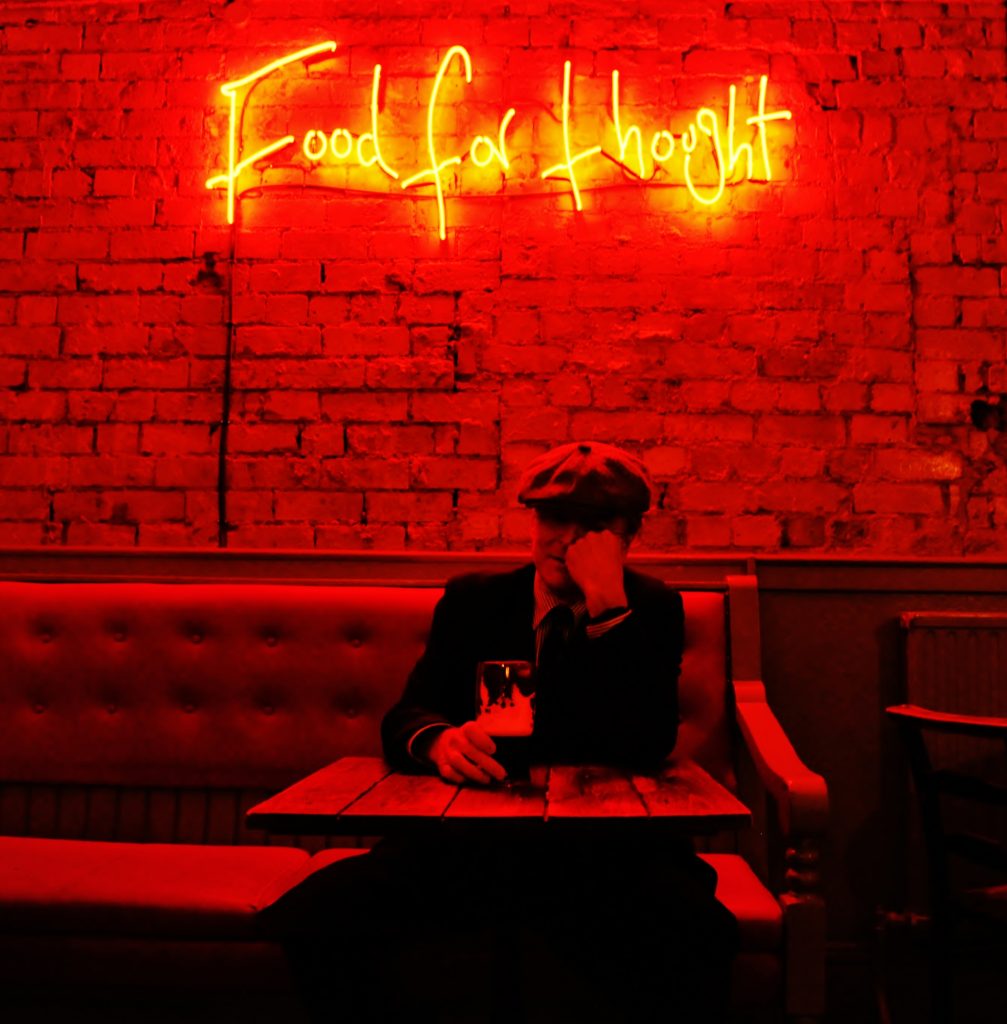
We are sat in a room at the back of the pub, with a neon sign on the wall. “Food For Thought.” UB40’s very first single, which reached number four in the chart in early 1980, the first song to hit the Top Ten without major label backing. It got to number one in New Zealand. Taken from their Platinum selling debut album “Signing Off.” They have had four Grammy nominations, a Brit award nomination and more than 50 singles in the UK chart, including several number one albums.
I kick off the interview to find out when Brian began an interest and participation in art. “At art school when I was 11-years-old, which is where most of UB40 met. It was the Junior school, Moseley Road School of Art a couple of miles from here. Built specifically as an art school in the 1880s by a team of architects based in Colmore Row in Birmingham.
“When we had painting classes in the top of the school, you’d pull these ropes and the glass roof would open up and you’d sit under the clouds in the sun learning to paint. I say learning to paint; you painted your mate’s ear and things like that, you know!
“Like any kids at school, we majored in smoking fags and chasing girls. At 16 you would go on to Art College, but I was the only one of the guys who got a job. Apprentice electrician. It lasted until I had a deposit for a saxophone!
“I said to my old man; I can’t do this. I was going to work one morning; we used to start work at eight o’clock, and it was pitch black in the winter. All the guys in this tea hut in their break would be melting their bootlaces with boiling water, on the boots they had taken off because they’d frozen.
“Under a microscope there will be gunpowder, blood, bits of metal, bits of horse’s hooves. The DNA of that horror in those trenches.”
“They’re fucking angry and don’t wanna fucking be there, and they fucking hate their shit Austin Allegros. I thought, if I work really fucking hard, I’m gonna become one of these;’ This is gonna be me. I told the old man; I want to be a musician. He said, ‘Yeah; run like the wind son, and go for it.’

“I left the job. Back then you got your holiday pay and you had worked a couple of weeks in hand, so I had enough for a deposit for an old second-hand saxophone and my old man signed ‘the drip’ (HP) on it. It cost £1.20 a week, for a £75 sax back in 1977.
“I was music mad. I was a roadie then for a Birmingham punk band called the Suburban Studs. They were playing alongside the Clash, the Sex Pistols, Generation X, 999. I was carrying a guitar and a combo (amp) – that was being a roadie! We toured with AC/DC; I thought yeah, I am on tour, in the back of a transit van.
“We were starting to form a band by now. I’d got my sax…none of us had been in a band before. We all met at Moseley Road Art School where it all started. If you were the kid in the class who could draw the best dinosaur….there’s always a kid in the class who could draw better than anyone else, and that was me in my class…you got an opportunity to take the art exam.
“You had to paint your Grandad in the garden, gardening. I’ll never forget it. It was fucking terrible, but I got into the art school. When I was a teenager in school, I didn’t want to learn nothing and all I wanted to do was bunk off and have a laugh. I did it for weeks and weeks on end.
“I did learn a lot there. It taught us how to think about art, and I only realised that once I’d grown up and became a man. We had art appreciation and art history classes. I learned that 99% of making art is looking. We didn’t study music, the most abstract of all the art forms. You can’t see it, you can’t touch it but fuck; it touches us. Transports us to wherever we need to be when that song is playing. Just 12 notes that’s all it is. It is total freedom.”
So what is the parallel between art and music? “You try to create an aural picture when you are writing songs, to create this place that people can imagine.”
Brian has always painted since he was a snotty-nosed kid and has never stopped. Something he feels he HAS to do, the same as music. For years he has given his work away to friends, to family, to charity auctions and raffles, and pictures just for himself and shown no one. . Some people have bid up to 20 grand for one of his pictures, the proceeds benefiting charity. But in the last few years, the commercial side of his art has taken off.
How does he see himself as an artist. In which camp? “I fancy myself as an abstract impressionist. The abstract is purely to provoke thought.”
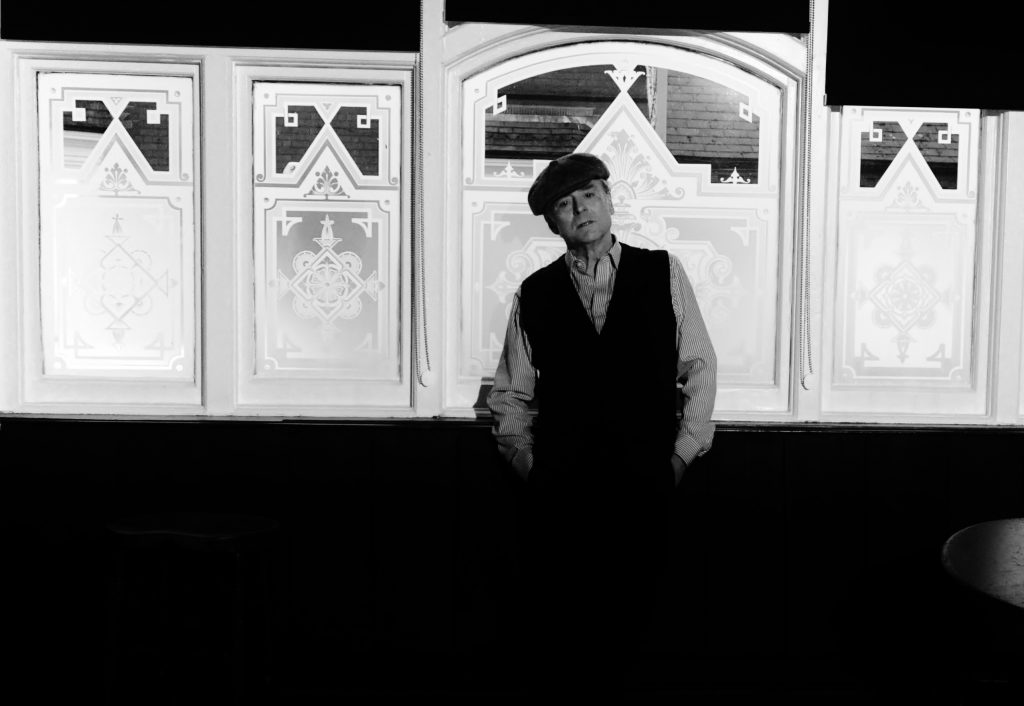
His curators asked Brian for something more figurative and less abstract, to tap into the lucrative interior design market. So he painted “Pick Axes and Shovels,” as a tribute to his Irish ancestry. “I come from a long line of Irishmen who expressed themselves with a pickaxe and a shovel, not a saxophone.
“I painted pictures of them digging that railway from New York to San Francisco. The Transcontinental railroad in the 1880s, which joined the East and the West; for good and for bad.”
A friend of Brian’s in Wales said that painting reminded him of the Aberfan disaster in1966, when the collapse was caused by the build-up of water in the accumulated rock and shale tip from the colliery, which suddenly slid downhill in the form of slurry and crushed the school below. Killing 144 people: 116 children between the ages of seven and 10, and 28 adults, including five teachers. More than 1.4 million cubic feet of debris covered a section of the village in minutes.
Brian was seven-years old then. “I started researching that tragedy and I saw all these pictures, focused on the tenacity of the survivors. I found this picture of a guy carrying a boy out of the demolished school. They dragged him out, cleaned his face and nose out. His name is Jeff Edwards.
“It was only about eight or nine months ago that I realised it was the 50th anniversary of the Aberfan disaster. While on tour, I was looking at the Sunday Mirror and their coverage of the 50th anniversary, and there was this photograph of the lad Jeff Edwards. He became the Mayor of Merthyr Tydfil as an adult.
“So a week later we are in Cardiff for a show, and Jeff Edwards comes along and I meet him. He said it had been hard talking about it all again. An amazing man; he got £300m out of Maggie Thatcher and built a hospital, a school and 100 houses.”
That emotional meeting spurred Brian on to paint a series of pictures to commemorate that terrible day, but focused on the hope of the survivors. The day after I met with Brian, he was being picked up at 4am to be driven to Wales to meet with Jeff again.
The pair then visited the site of the tragedy, to collect some dirt which contains coal dust, from the memorial where the school once stood. They then visited Brian’s paintings hung in Merthyr Tydfil council house, to put some of the coal dust into black paint and on to the pictures. Powerful stuff. The Welsh National Gallery thought so too, buying Brian’s Aberfan pictures.
There are two sides to Brian’s art. Satisfying his business partners and the demand for interior design images, and the other; looking inside himself to try to reach the place he feels he has not yet reached. To produce thought provoking images that have an indelible and subliminal message.
“I’d never been anywhere before music, but now art is taking me places. I have been all round the world with UB40. Now I’m looking inside, looking inside me. Music is a team sport. Art is just you and the idea.
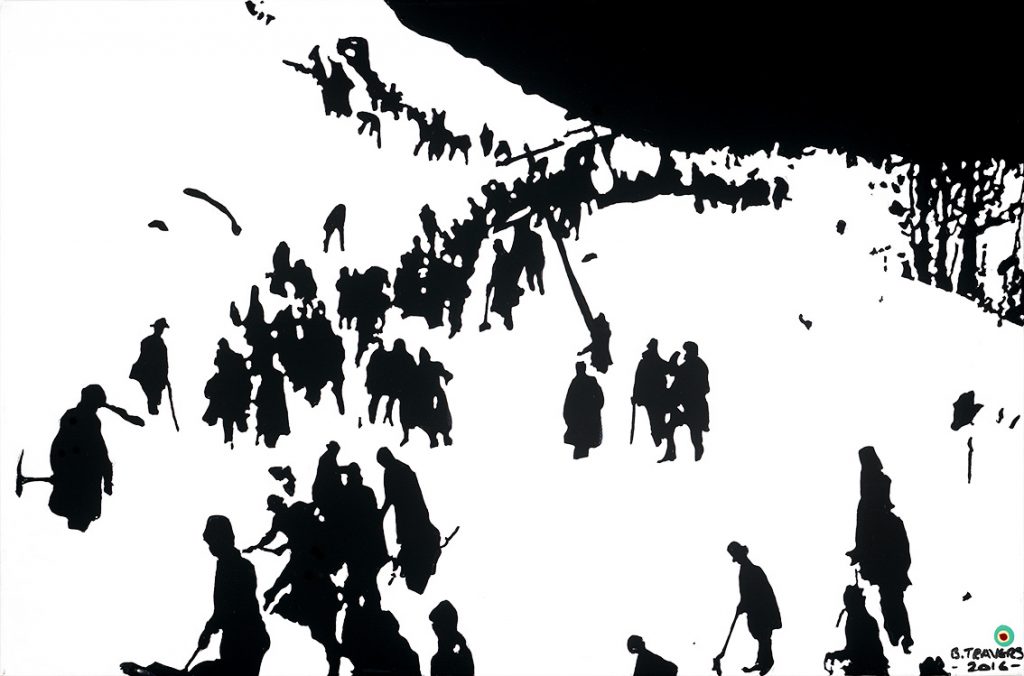
When the day closes down and it gets quiet, Brian paints at home on the kitchen table. He doesn’t sketch while he is travelling. He does take photographs of his work as the paintings progress, and; “I stare at it and work out what I have got to do with it.”
Following on from the Aberfan disaster and the pictures that came from it, Brian had a second bout of inspiration arising from scenes of abject horror, when he visited the National Arboretum in Staffordshire recently. He was focused on Armistice Day, the 11th Nov, and the desire to promote peace.
He was moved by a corner of the Arboretum grounds, where there are a few dozen wooden posts, to recreate when so called cowards were shot by their own side in World War One. Brian began to research the battles in Ypres on the Somme and trace the war records of various soldiers who were shot for cowardice.
He went a step further too. He contacted the Tourist Board in Ypres where the Western Front was located, told them what he was doing and asked them if they could get him some soil from the site of the trenches. Fernand Vanrobaeys of the Ypres Tourist Board kindly obliged, as a very special concession to Brian.
“They sent it to me, and it arrived today. Half a kilo of soil. I put my hand in it this morning before coming to see you, and it is still a bit wet. Under a microscope there will be gunpowder, blood, bits of metal, bits of horse’s hooves. The DNA of that horror in those trenches.”
Brian had painted the pictures but they were now just waiting for the dirt to be painted on them. Wolverhampton Civic Art Gallery had shown interest in displaying them and the Imperial War Museum was in talks with Brian about them.
He also painted 11 different poppies for the 11th minute of the 11th hour on the 11th day of the 11th month. In poster paint and enamel paint.
Brian dedicated each painting to soldiers killed for alleged cowardice. One young man he researched was a 24-year-old, five feet two inches tall chap called Jack from Altringham near Manchester. Who, after just five weeks of training, had never seen a gun in his life, who had “bad teeth and a heart murmur,”….”a little lad, a gardener at the turn of 20th century, was in World War One.
“I dedicated the paintings to the guys who were executed for supposed cowardice, sitting in the trenches shitting themselves, frightened to death. ‘For that we are gonna fucking kill you.’ 19,000 young men were killed there in one day. Poor little things…. I also painted a purple poppy for all the animals that died, and a white one for peace; that’s the one that pisses them all off.”
Brian talks of the different mediums he uses, including paint you put on brake callipers and paint from Homebase DIY stores to paint furniture with! He speaks of Reubens spending four years “with the end of a feather, painting a man holding a cabbage outside a beautiful Tudor home, with a fat girl standing next to him.”
“I cannot spend that kind of time. I do seven hours, ten hours, some can take weeks. But I have to think in terms of selling them. Aberfan took two months; six in the set. There was ten, but the others didn’t make it. I painted over them.
“Many of my pictures have been other pictures underneath. I buy canvas’ from Oxfam and Sue Rider charity shops. I got a Bulldog sitting on a Union Jack that nobody wanted, as it was the right size. So I whitewash over it and paint over it. That is re-cycling….”
Brian has had several one man exhibitions in Henley in Arden and Birmingham. His work has been displayed in the Mail Box in B’ham for the last couple of months. He has installations in the four star Malmaison Hotel in the City. He has a show at a top five star hotel in London this month (December) too.
Recent commissioned work includes a tribute to David Bowie and Muhammad Ali after they both passed away. Crystal Palace footballer Damien Delaney bought an Ali and Bowie ‘Lazarus’ picture. Former England footballer Michael Owen has some of Brian’s work too.
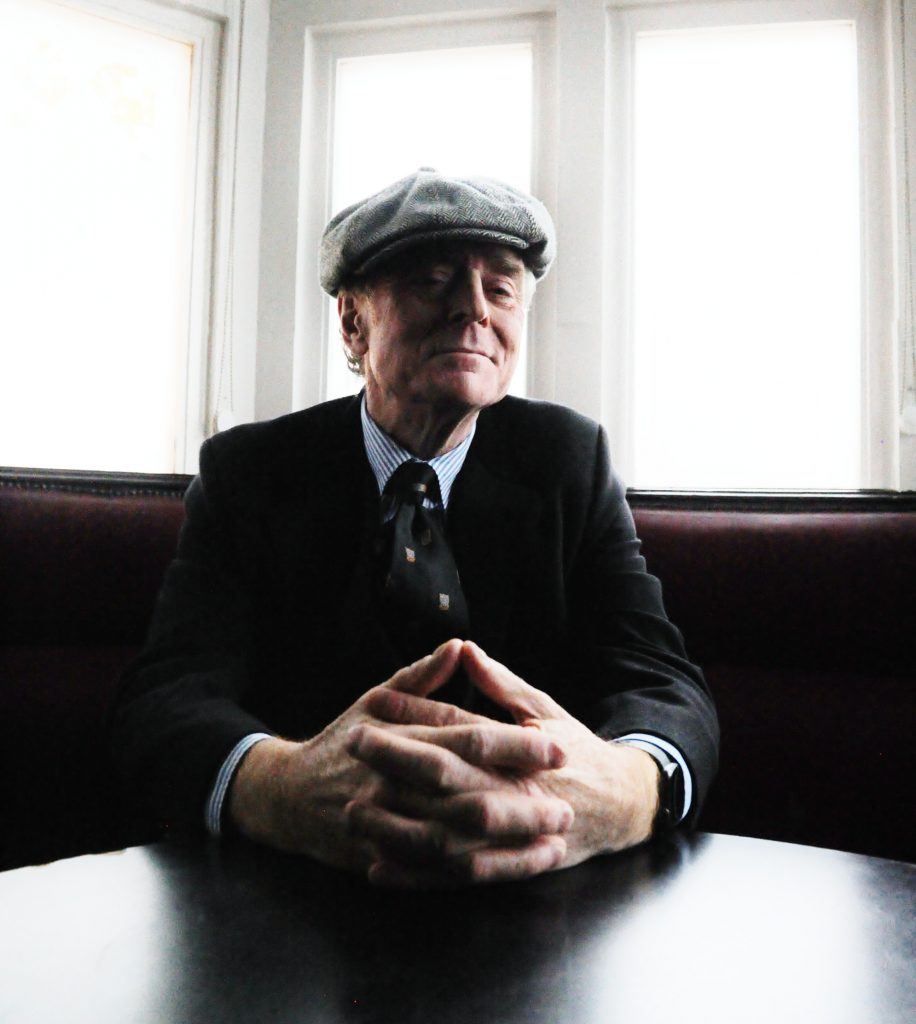
A big fan of Jackson Pollock and Picasso, Brian is not so much a surrealist fan, so Dali is not on his radar. “I like the idea of making art emotionally and not figuratively. I can do it, but it is what it is.”
So when Brian “digs deep,” what did the reggae star find out about himself through his art that he didn’t find out through music? “When we are young men, we wrap veneers round ourselves, to be what we think we’ve got to be. Most musicians audition for bands and don’t know any of the others, so they can get a bit of fame to reinvent themselves.
“They say; I’ve always been a genius. I’ve always been fantastic. I’ve always been brilliant…..Because they don’t know each other. The band I’m in, all went to school with each other. I can remember ‘em getting beaten up by girls in the street. I can remember them pissing their pants and crying their eyes out when they got a smack in the head.
“Likewise with me; we couldn’t reinvent ourselves. We couldn’t wrap any veneer round ourselves. But you do hold back, you have to; to protect your soul, your emotions.
“I found out I am a more emotional man than I thought I was. I can cry easily at sad things. I love being on my own, painting on my own. I like that time – it’s precious to me. It is generally from about two in the morning to about six in the morning.
“I always have music on while I paint. Always. It really makes a difference to the way we paint. ‘Sketches of Spain,’ by Miles Davis. A few years ago I had that on and all the paintings came out like the movements of a Flamenco dancer. Throwing paint at the canvas…. I did this whole series of paintings based on jazz and it really did work that way. It’s inspiring.
“I found out I don’t mind being on my own painting. I look forward to what I am going to find out and I don’t know where it is going to take me. It’s a journey in my head and my heart.”
Did art ever take him to places he would rather not go. “Yes. Those war paintings and the Aberfan work…. I had to think really deep about them and it made me cry a little bit. Then I knew I had arrived.
“I was looking at photographs and I thought; I’m not going to paint grave stones or dead children. I kept looking and when it made me cry, I filled up; then I knew I was in the right place to paint them. Yeah, I don’t know where it’s going to go. But I have still not hit that place where I can think ‘I am an artist.’ Maybe these war paintings will get me closer.”
It is a kind of therapy, he admits. “Yes. When you imagine a painting, it’s not like you sit there going, what am I going to do next? What colours shall I use now? I have already painted it effectively, in my mind. When I paint it is therapeutic. Super relaxation.
“I’m thinking about other stuff, the next paintings I’m gonna do. I spend a lot of time looking at them. It’s kind of nice, quiet time, which I haven’t been used to being on the road for 38 years.”
Brian cannot ever see the day he quits music for art, or vice versa. He craves both. “I need to do music, and art. Eric Clapton said this some years ago, and I didn’t understand what he meant at the time, but I do now….. He was asked if he practiced every day and he said no, no, no. He said, I put it down. I treat it like a real treasure, like rare gems; those notes. So when I do get the guitar back, I can’t wait to hear them.
“You can over practice, you can over play. Music’s like that for me. When I’m painting, I put the music down for a little minute and when I get back to it, I’m really enthusiastic about doing it. This last UK tour, the 27 dates went far too quickly.
“I love the privilege of being able to make this noise at strangers. The honour and the privilege of earning a living, going out and being allowed to make a noise that they approve of.”

The band is in peak form right now. After several sell out tours in the UK and overseas in the last few years and a recent hit album. They were the subject of an hour long BBC TV documentary this month (December 2016) and just before that, were all over the world’s press and broadcast media when they endorsed Jeremy Corbyn for the Labour leadership campaign, and he held a news conference in London with the band by his side.
In May 2016, I was at the show they did at Splendour Festival, Nottingham, where thousands upon thousands, a sea of heads as far as the eye could see, sang along to most of their set. Even the more obscure songs. It was a wonderful day and the band really was mighty.
They are working on a new album in the studio in Coventry right now, due out sometime in 2017. Brian told me he wants to make a political album, something a bit more hard hitting. “When we were teenagers, we’d go on rallies for the Anti Nazi League. We were politicised, we were motivated.
“If you weren’t doing that, your band wasn’t really anything. If you didn’t have a stance and attitude, you might as well be in the Eurovision song contest back then.” He praised Jeremy Corbyn as a man and a politician, and told me their meeting with him had revived his belief in Socialism.
Of course, the chat inevitably got around to the well publicised “troubles” with former lead singer Ali Campbell who quit the band to go solo in 2008, and two ex-members Astro and Mickey Virtue who joined Ali and now use the UB40 name. “Yeah, we’ve got some business problems with ex-members of the band. I lost everything. I got caught in the ‘joint and several’ thing.
“They (Ali and co) lost in the pre-trial hearing. They lost (to have the case against them for ‘passing off’ using the name UB40, thrown out) and were supposed to be getting round a table to sort it all out, but they go and release a ‘UB40’ album instead! It is sad; Ali was my best friend since school and the best man at my wedding.
“The High Court action will continue. To decide how he uses the name UB40. We tried to make it happen to get round a table, but…. . Yeah the court case has got to go on. Around the world, promoters say we can’t book you because every time we book you, this fella is booking a venue two days later on the back of our advertising.
“But it’s not that important. If you want to come and see UB40, the original song writers, the original guys, come and see the one with Duncan Campbell singing. If you want to go and see Ali Campbell with a bunch of really cool session players, jobbing musicians, go see him.
“Otherwise; who gives a flying fuck. It’s not really that important in today’s world, is it?”
Brian’s desire with his art is to “paint big.” 12 foot by 8 foot. “Big sizes rather than interior décor. Rather than something that goes with the new settee in the ubiquitous room. I have to find out if I’ve got it in me.
“Have I got it in me? I didn’t know I could write songs until I struggled and wrote some songs, and then not everybody would agree. So I am still learning to write songs.”
Question: Who would he most want to sit for him for a portrait, living and deceased? That was something he wanted to think about and a week or so later, I got a call to tell me his answer: Living: Music artist Chuck D. No longer with us: Jamaican political leader Marcus Garvey.
A few quick fire questions to finish off with, before a cold Guinness! Sum up Brian Travers as an artist in one word: “Hungry.” In his music: “Hungry.”
“As an artist, I am still waiting to arrive. If I didn’t feel that way, it would just be a hobby. It is not a hobby, it’s like music; it’s my muse. I’m really hungry to play like Stan Getz, like Charlie Parker, like Clarence Clemons and like me on a good night. Every night.”
Best moment of his music career, apart from this scintillating interview, of course? “When Nelson Mandela got released, before that we observed the apartheid boycott in South Africa. After his release, we played the biggest stadiums in Capetown, Pretoria, Durban…Huge places.
“It was not so much about us, but about how suddenly South Africa came together, and how black and white people voted and made that change and it set white people free. You could see the freedom on their faces. Witnessing that was a real ‘fucking hell’ moment for us.”
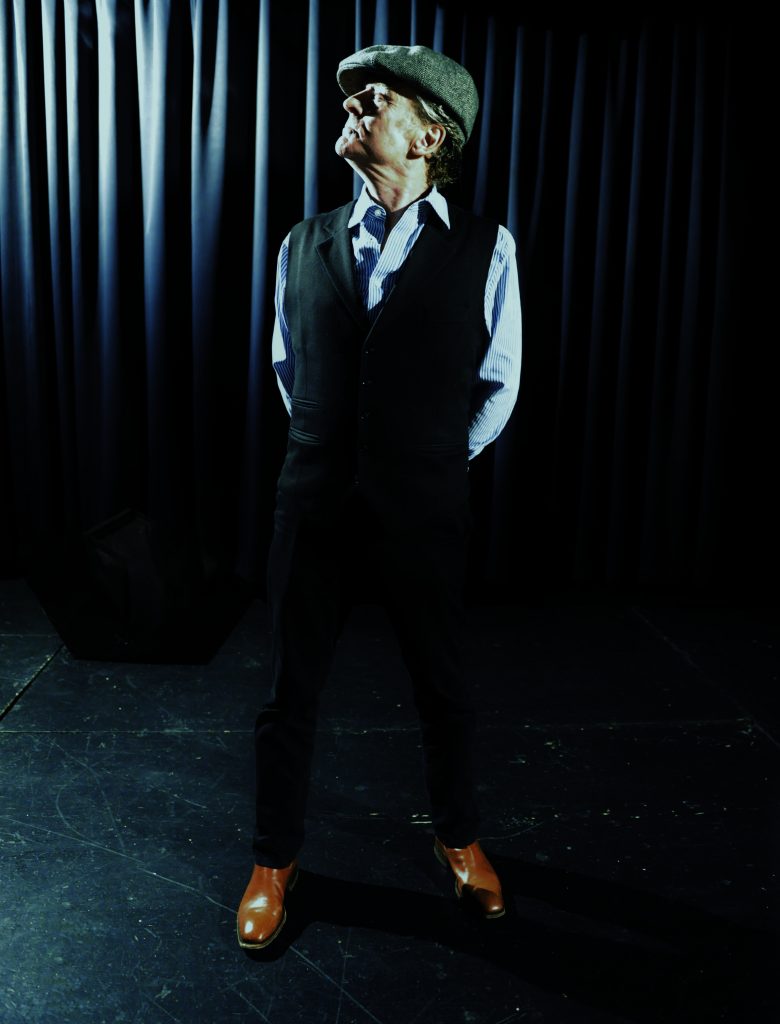
Another vivid “best moment” came closer to home. “The first record we made was called Food For Thought. The name of the room we are sat in here in the venue where we played our first gig on 9th February 1979. They have got the blue PRS plaque on the wall outside.
“A little label called Graduate Records released it. I am standing waiting for the number 11 bus, the outer circle bus, and I’d just had a kid with my girlfriend Leslie, now my wife. It was warm, and I am standing with my saxophone in a box about 4.30pm and there is a big traffic jam.
“It is a warm day and all the windows are down in the cars. It was 1980, and there were loads of people at this bus stop. I am right at the front. I could not get on the last one as it was full.
“I heard one of the DJs on Radio One say; ‘this is a band called UB40 and Food For Thought,’ and I am stood there and it is playing in a car stopped opposite me. I couldn’t tell anyone, all these strangers at the bus stop. What a great feeling.”
Birmingham City fans all sing to the tune of “Food For Thought” today and UB40’s song, “Kingston Town.”
Another pleasant memory he has from when the band had not long been together, was their first ever trip to the USA. When Brian was about 21-years-old, circa 1980 – 81, the band had gone to New York and while he was there, he walked to a music shop to get some reeds for his sax. Outside was a guy playing sax in the street.
Brian’s eyes popped out of his head. It was his hero, Sonny Rollins. Blowing his horn in the rain as passers by did just that; passed by and ignored him. A Titan. A legend. A colossus. Ignored. Sonny was one of the main guys who inspired Brian to pick up a sax in the first place.
Manny’s famed music store in Music Row near Times Square in New York was the place. It began selling brass instruments in the 1930s. But it closed its doors for the last time in May 2009, after 74 years in business and with more than 3,000 autographed pictures on its walls, of famous musicians who had visited the place over those years, including Bob Dylan and Bob Marley. Maybe UB40 among them.
So what did young Brian Travers say to his main inspiration when he walked up to him in that street? “I didn’t speak to him at all. I was far too scared. I just let him be and could not believe my eyes that here he was. No one recognised him, but I sure did. I have never forgotten that moment. I love Sonny’s music; he definitely inspired me to play the horn.” It’s an art they both share.
Coincidentally, we have a world exclusive interview with 86-year-old living legend Sonny Rollins in our Features Zone. Check it out…..
For all enquiries about Brian’s art works: email Adam Sargent: btas.adam@gmail.com
https:/ /www.facebook.com/briantraversartstudio/
Words & Photos of Brian Travers: Simon Redley
All artwork: Brian Travers (www.briantraversartstudio.com)



